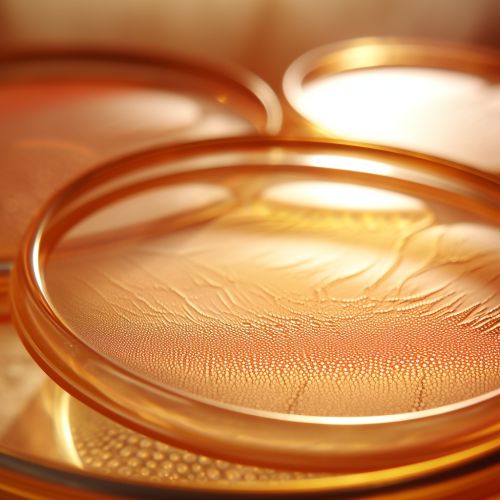Skin Tissue Engineering
Introduction
Skin tissue engineering is a branch of tissue engineering that focuses on the development and growth of new, healthy skin cells to replace or repair damaged or diseased skin. This field of study is a part of regenerative medicine, which aims to restore the structure and function of damaged tissues and organs.
History and Development
The concept of skin tissue engineering emerged in the late 20th century, with the first successful laboratory-grown skin graft performed in 1981. The field has since evolved, with advancements in biotechnology, cell biology, and materials science contributing to its growth.


Principles of Skin Tissue Engineering
Skin tissue engineering involves three key components: cells, scaffolds, and signals. The cells are typically derived from the patient's own skin to reduce the risk of immune rejection. The scaffold, often made from natural or synthetic materials, provides a three-dimensional structure for the cells to grow on. The signals, which can be chemical, mechanical, or electrical in nature, guide the cells' growth and development.
Cell Sources
The cell sources used in skin tissue engineering can be categorized into autologous cells, allogeneic cells, xenogeneic cells, and stem cells. Autologous cells are harvested from the patient's own body, making them the most ideal option due to their low risk of immune rejection. Allogeneic cells are sourced from other individuals of the same species, while xenogeneic cells come from different species. Stem cells, due to their ability to differentiate into various cell types, are also a promising cell source.
Scaffolds
Scaffolds in skin tissue engineering serve as a temporary matrix for cell attachment, proliferation, and differentiation. They can be made from natural materials like collagen and fibrin, or synthetic materials such as polylactic acid and polyglycolic acid. The choice of scaffold material depends on various factors, including its biocompatibility, biodegradability, mechanical properties, and ability to support cell growth.
Signaling Molecules
Signaling molecules play a crucial role in guiding the behavior of cells in skin tissue engineering. These can include growth factors, cytokines, and hormones. These molecules can influence cell proliferation, migration, differentiation, and maturation, thereby controlling the formation of the engineered skin tissue.
Applications
Skin tissue engineering has a wide range of applications in both clinical and cosmetic settings. Clinically, it can be used for the treatment of burns, chronic wounds, and skin diseases like vitiligo. In cosmetic applications, engineered skin can be used for skin rejuvenation and anti-aging treatments.
Challenges and Future Directions
Despite the significant progress made in skin tissue engineering, several challenges remain. These include the high cost of production, issues with scaling up the production process, and the need for more effective methods of delivering the engineered skin to the patient's body. Future research in this field is expected to focus on overcoming these challenges and improving the efficacy and accessibility of skin tissue engineering treatments.
